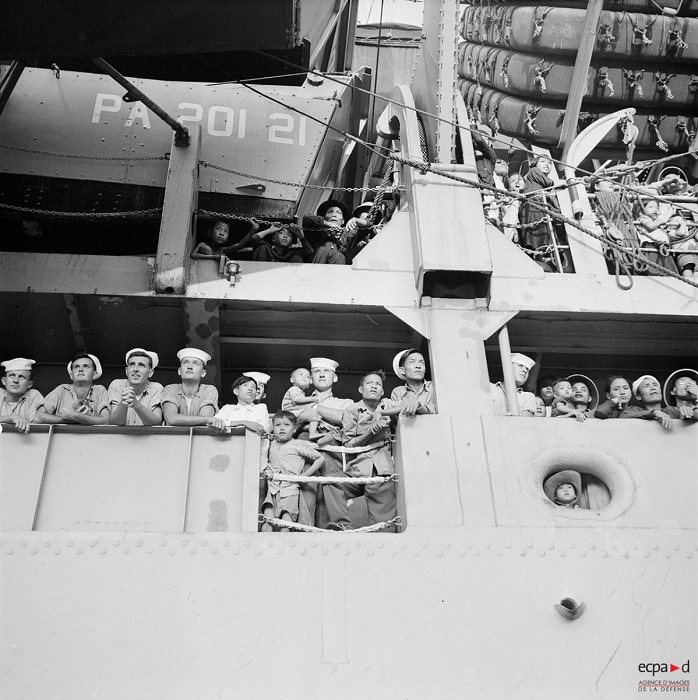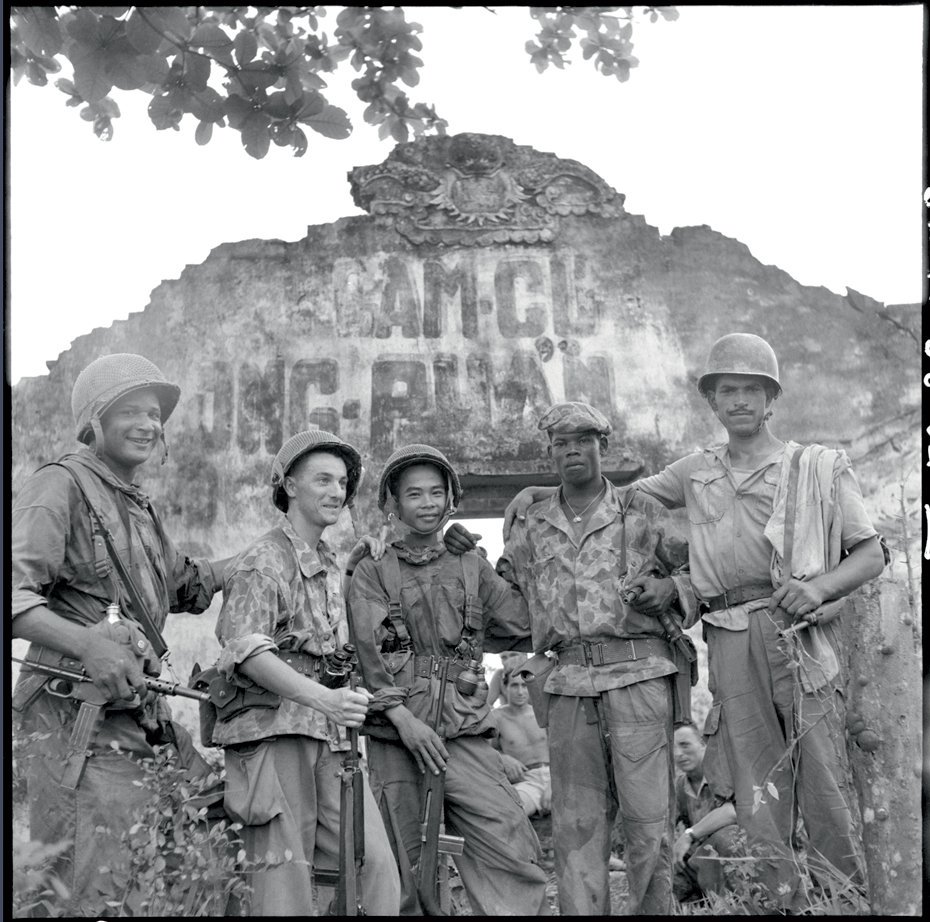A tribute to French soldiers killed in Indochina

Soldiers of different nationalities pose for a group portrait during Operation Camélia.
Mai 1953. ©ecpad
Background for understanding the 8 June
French Indochina knocked off kilter by the Second World War
Part of the French colonial empire since the late 19th century, Indochina was made up of three colonies – Tonkin in the north, Annam in the centre and Cochinchine in the south – and two protectorates: Laos and Cambodia in the west.
During World War Two, the Japanese invaded Indochina. Following Japan’s surrender in September 1945, the Viet Minh independentist movement led by the communist Ho Chi Minh took advantage of the political vacuum and declared Vietnam’s independence. After attempts at negotiation, France decided to recapture Indochina using military means, sending its French Far East Expeditionary Corps (CEFEO) to the region.
An independence war wrapped in a cold war
While the Vietnamese nationalists under Emperor Bao Dai negotiated with the French, which in 1948 led to the creation of an independent Vietnamese state that united Tonkin, Annam and Cochinchine and the recognition of the status of Associated States for Cambodia and Laos, the Viet Minh, fighting against Bao Dai, waged guerilla operations to try and oust the French.
After Chairman Mao’s victory and the declaration of the People’s Republic of China on 1 October 1949, the Vietnamese communists received significant logistical support from China, giving the army the wherewithal to form field forces of several thousand men. General Giap, commander of the Viet Minh, was then able to go on the offensive. During the course of October 1950, he pushed back the French from the Chinese borders. After a while, he launched the assault on Laos in the spring of 1952. To hem in and annihilate his forces, the CEFEO installed two air-land bases in the Thai highlands, one in Na San, between October 1952 and August 1953, and the other in Dien Bien Phu, from November 1953 onwards. French withdrawal from Indochina began in Dien Bien Phu when the war ended on 8 May 1954.
The end of French presence in Indochina
The Geneva Conference which was held in the spring and summer of 1954 brought an end to the Indochina War. The resulting agreements instated a ceasefire across the entire peninsula and made Laos and Cambodia neutral states. They recognised the democratic government, the unity and sovereignty of Vietnam (Tonkin, Annam and Cochinchine) but they did however temporarily split the country into two zones along the 17th parallel, the French forces regrouping in the south, held by the nationalists, with the Viet Minh forces in the north. Free elections were planned for 1956 to reunify Vietnam, but they never took place
French military losses were high: over 47,000 soldiers from mainland France, legionnaires and Africans were killed along with 28,000 native soldiers in the CEFEO and 17,000 in the armies of Indochina’s associated states. The Viet Minh’s losses were estimated at nearly 500,000 soldiers.
National day of 8 June
Established by Decree no. 2005-547 of 26 May 2005, this commemoration day marks the day when the remains of the Unknown Soldier were transferred from Indochina to the national cemetery at Notre-Dame-de-Lorette. This national day was dedicated to those who died in the Indochina War in general and the Battle of Dien Bien Phu in particular.
A memorial dedicated to the French troops who died in Indochina was erected in Fréjus on a hill overlooking the town. Inaugurated in 1993 by the President of France, it holds nearly 24,000 military and civilian graves from those who died in Indochina.
Since the learning room was renovated in 2009, the Memorial to the Indochina Wars has presented the history of French Indochina. It fulfils two objectives: to pay homage to the expeditionary corps soldiers and to offer visitors, school groups in particular, historical information.
View the message from the Minister for Remembrance and Veterans at the Ministry of the Armed Forces
Access a whole series of resources
documenting this national day
Historical articles
- A general article on French presence in Indochina
- Articles on military operations
Tonkin: the test bed for “pacification” in Indochina, an article by Jean-Marc Le Page published in the RHA
On Dien Bien Phu, a general overview of the battle and an article on the volunteer paratroopers
Indochina 1954, an article by Ivan Cadeau published in Les Chemins de la Mémoire no. 243
- Articles about the end of the conflict
The French prisoners in Vietnam, an article by Julien Mary published in Les chemins de la mémoire no. 243
1954-1956, the Departure of the French Far East Expeditionary Corps, an article by Ivan Cadeau published in the RHA
“Spotlights on...
A documentary film
- « Fragments d’Indochine », a short film (12 min.) featuring never seen before archive footage looking at the period in four phases: the Second World War (1940-45), the military operations (1946-49), the internationalisation of the conflict (1950-54) and the epilogue (1954-56).
Filmed testimonials
- The testimonial of legionnaire Sebastián Abaladejo Orcajo (6 min.), recorded in 2016 by the press and communications department of the French embassy in Spain. Enlisted at the age of 21, Sebastián Abaladejo Orcajo served in Indochina where he was seriously wounded by a mine fragment before being evacuated by a female helicopter pilot. He talks about his experience as a soldier in the French Foreign Legion.
- The testimonial of Pierre Schoendoerffer featuring archive images (12 min.), an enlisted reporter interviewed at Fort d'Ivry, in 2011. Excerpt from the DVD book published by ECPAD, “They filmed the Indochina War”.
A database for researching French troops killed in combat
- The Mémoire des Hommes Mémoire des Hommes website gives users access to the database compiled by the Ministry of Veteran Affairs in the aftermath of the conflict where they can perform a search by name.
A place of remembrance
- The Indochina Wars Memorial, a major national remembrance site
An educational initiative
- The memorial project led by Kerraoul High School in Paimpol winners of the national “Heirs of Remembrance” initiative
Access to the SHD archives
Photos from the ECPAD’s Indochina archives
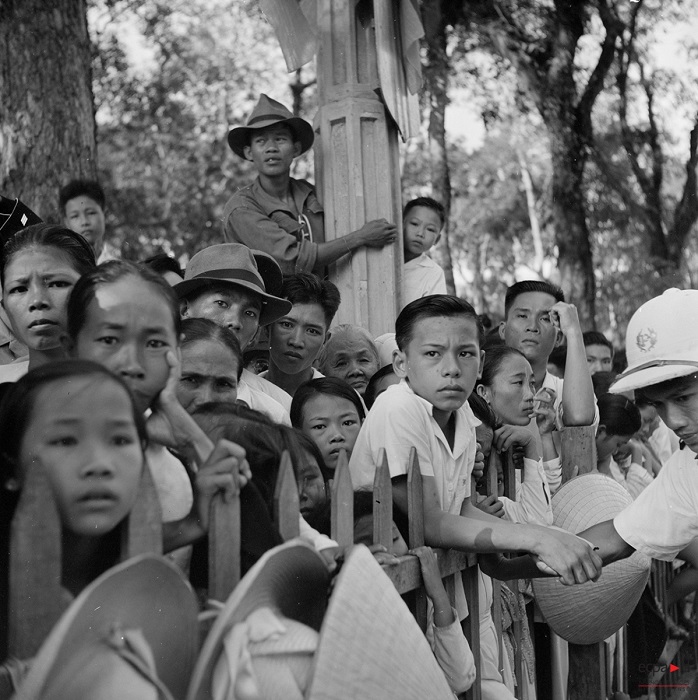
14 July 1951
Crowds attending the 14 July parade in Saigon, 1951
Photo SPI
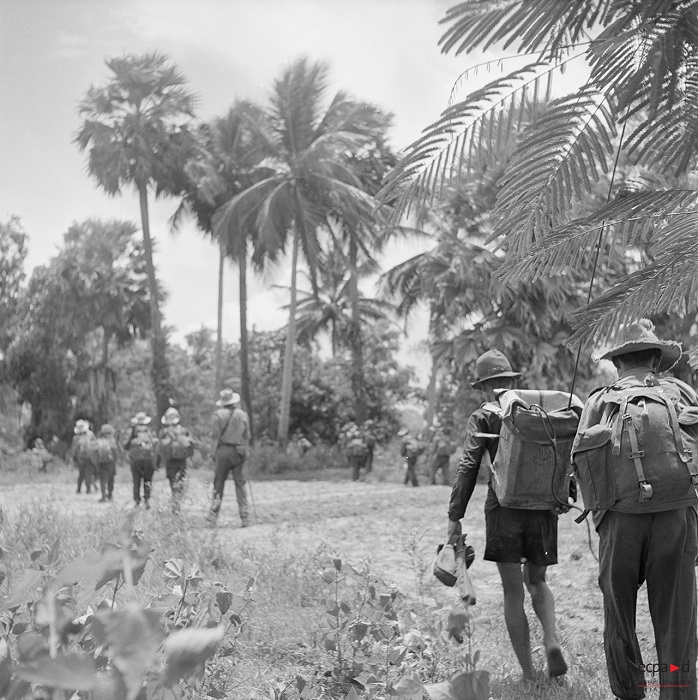
10 June 1952
Troops of the 2nd battalion of the 43rd Colonial Infantry Regiment (RIC) crossing a coconut grove during Operation Barnabé in Cochinchine.
Photo Raoul Coutard
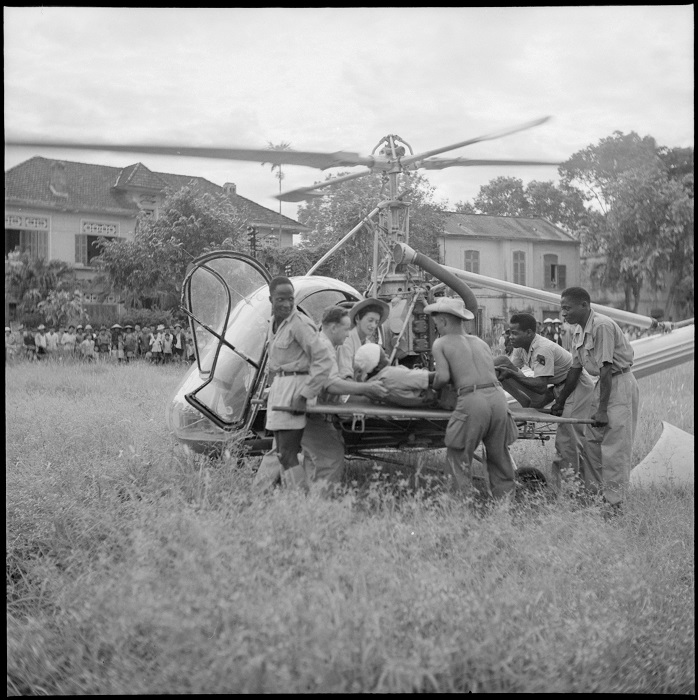
Du 1er au 10 juillet 1952. Évacuation d'un blessé par hélicoptère Hiller 360 piloté par le médecin-capitaine Valérie André.
© Auteur inconnu/ECPAD/Défense
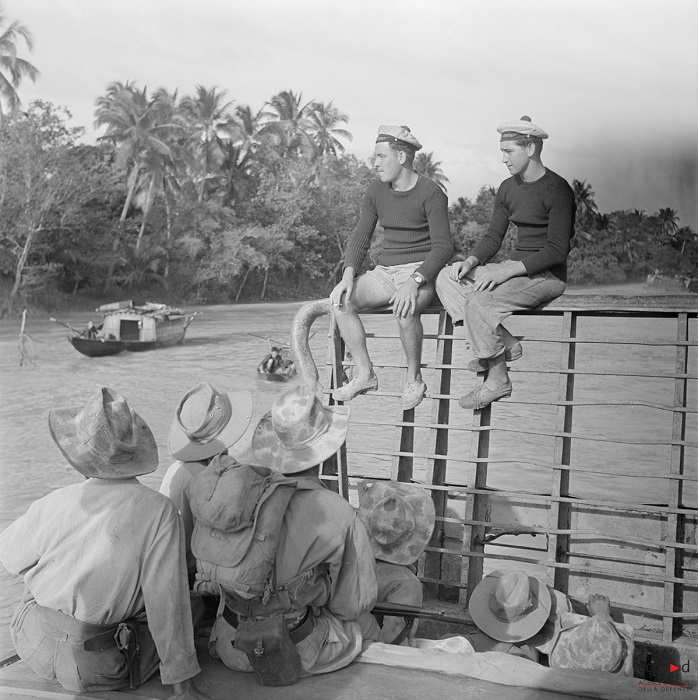
August 1952
The navy and the 13th Vietnamese battalion participating in Operation Bambou in Cochinchine.
Photo Guy Defive
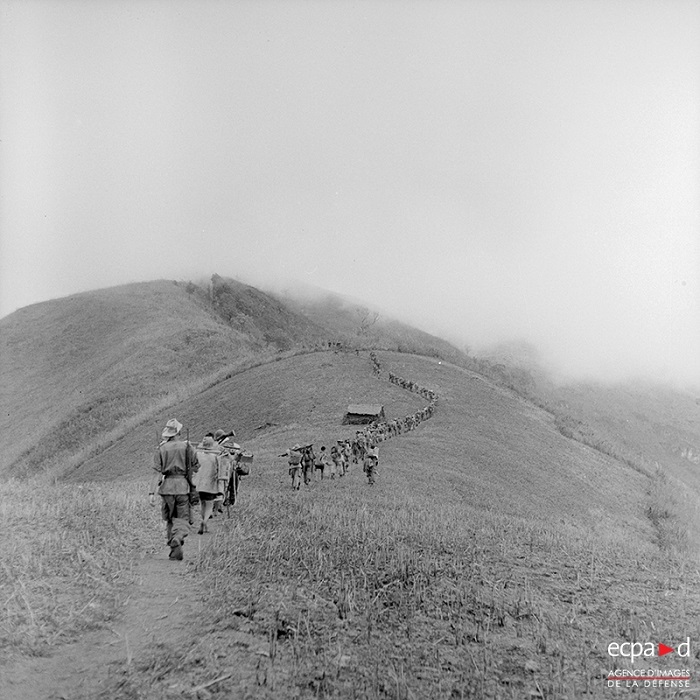
January 1953
Troops (1st MIR and 2nd infantry Tabor) on a crest in northern Lai Chau Province.
Photo Jean Péraud
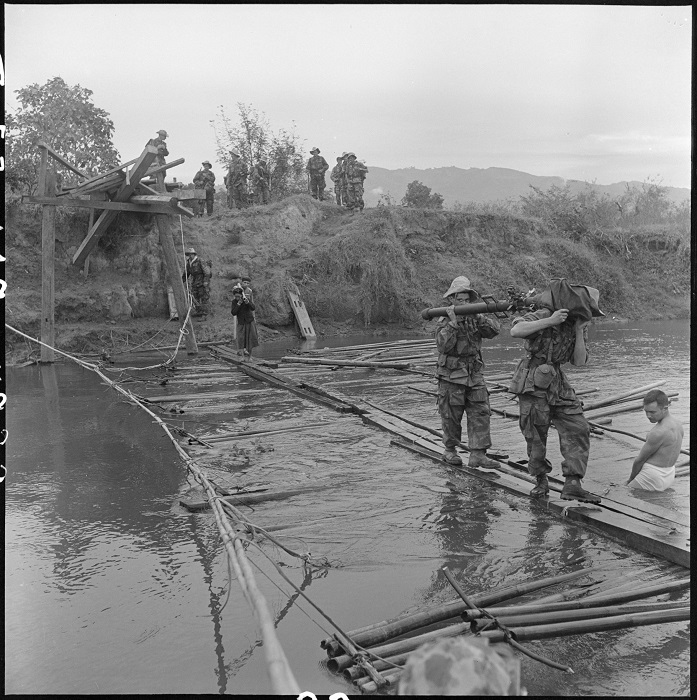
Du 20 novembre au 22 novembre 1953. Des soldats du 35e régiment d'artillerie légère parachutiste (RALP) et des partisans franchissent la rivière Nam Youm près de Diên Biên Phu sur un pont de fortune chargés de matériel d'artillerie.
© Daniel Camus/ECPAD/Défense
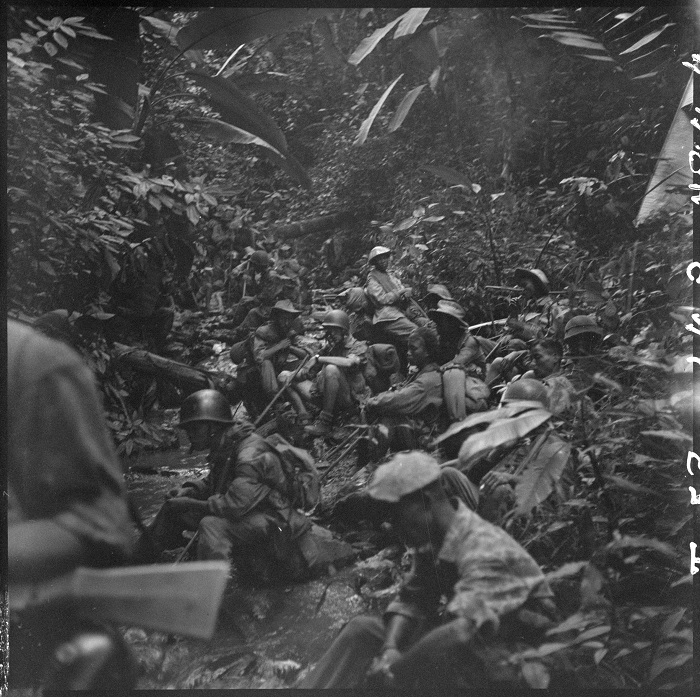
23 décembre 1953. Des parachutistes de la colonne Langlais font une halte au bord d'un ruisseau en plein jungle, au cours de leur progression vers le Laos.
© Jean Péraud/ECPAD/Défense
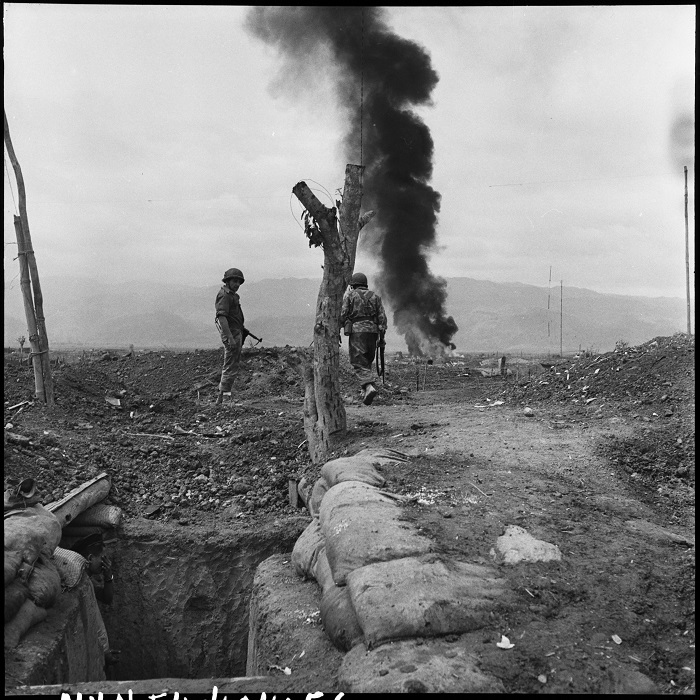
Du 13 au 17 mars 1954. Des soldats sortent d'une position alors qu'une épaisse fumée se dégage du terrain d'aviation de Diên Biên Phu.
© ECPAD/Défense
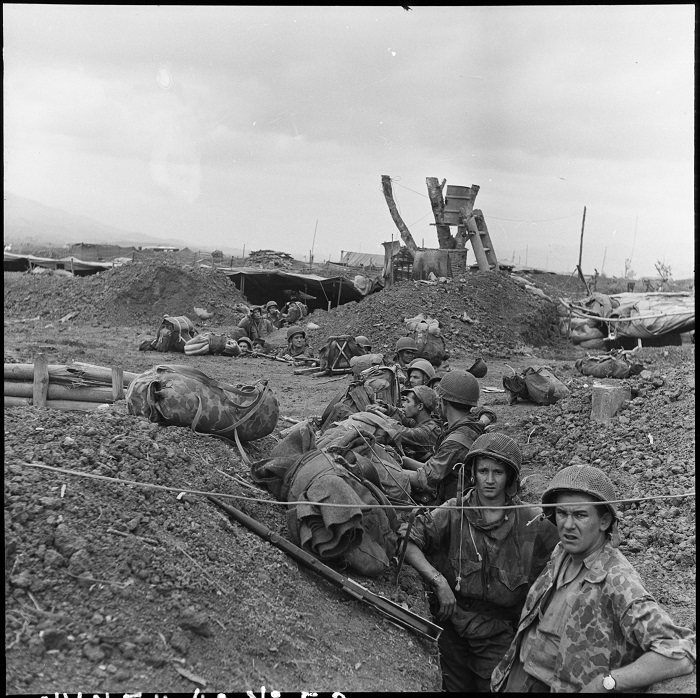
16-17 mars 1954. Des hommes du 6e bataillon de parachutistes coloniaux (BPC) attendent à l'abri dans les tranchées de Diên Biên Phu avant d'aller occuper de nouvelles positions.
© Daniel Camus, Jean Péraud/ECPAD/Défense
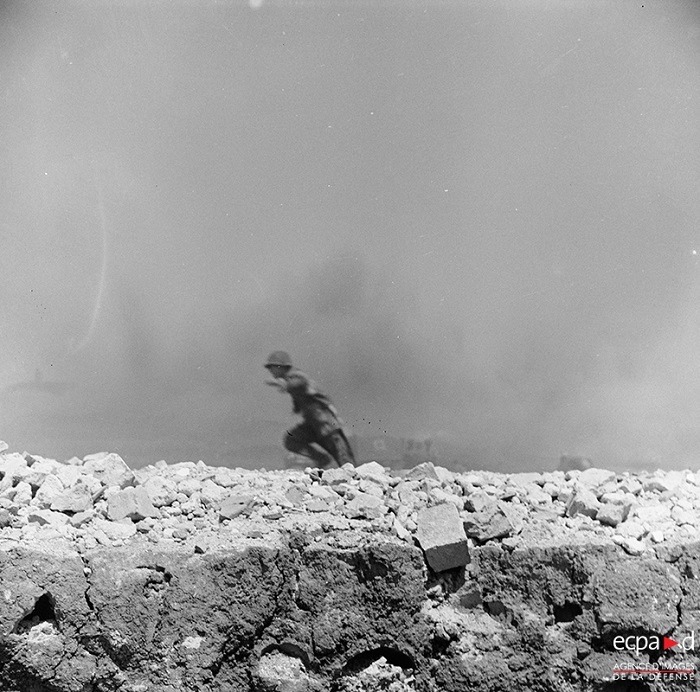
18 March 1954
Soldier during an attack in Dien Bien Phu
Photos Jean Péraud, Daniel Camus
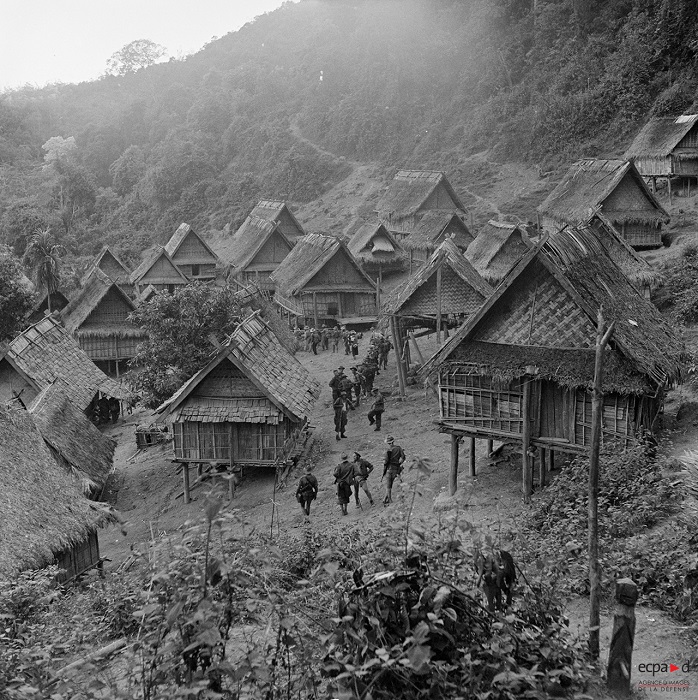
April-May 1954
Troops moving through the village of Phu Teng in Laos.
Photo René Adrien
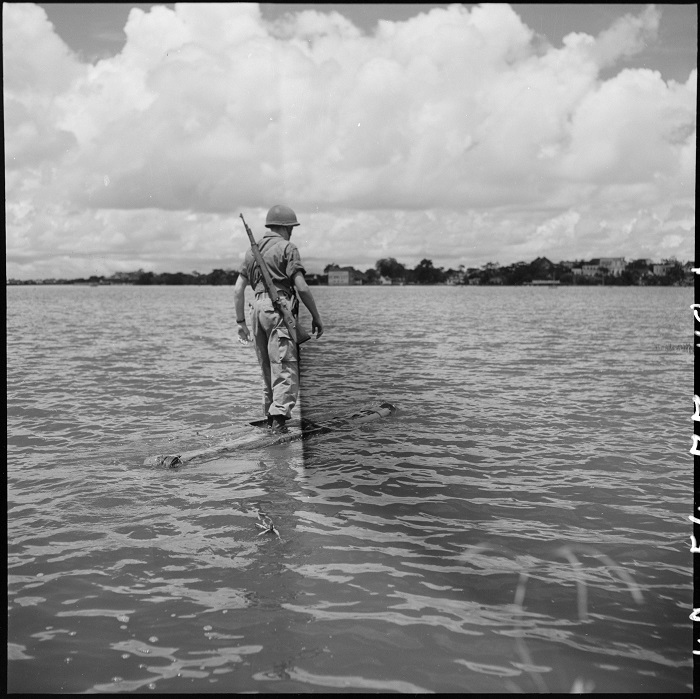
10 septembre 1954.Un soldat s'essaie au ski nautique sur le grand lac d'Hanoï ou lac de l'Ouest.
© Jean Lussan/ECPAD/Défense
